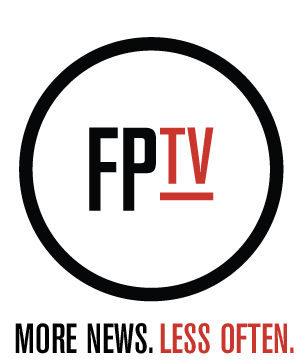Visual Vernacular: Emily Peacock
Entering into the realm of higher education, Emily Peacock was engaged in subjects distant from art. Encounters with cameras and lenses in college changed her path for the better. A creative collision of current circumstances, a yearning to connect to her past, along with a desire to visually transcribe familial history, Peacock began to forge the foundation of her photos. Oftentimes delicately shot with tinges of wild abandonment, Peacock’s work is sublimely Southern in nature. Scenes that might be puzzling on their own are transcribed more fully given the context.
Further understanding of her work is similar to the artist’s own understanding of her family, something she took upon herself in her early adulthood. The end result is a collection of work that is both strange and familiar, asking for answers yet simply saying the obvious. Her work in film is pushing further into the pull of southern landscapes and colloquialisms, exploring the presence of extended family and beyond. Peacock fills in the details for this installment of Visual Vernacular.
Free Press Houston: Your artistic development happened much later than most artists. How did you find art, or should I say, how did art find you?
Emily Peacock: I was born in and raised in Port Arthur, Texas. I had never taken an art class when I went to college, I’m not sure I even knew what art was back then. I went to Sam Houston State University for Criminal Justice, I changed to Forensic Chemistry after my freshman year. During my sophomore year, I decided to take a photography class. It was the hardest class I had ever taken. I was always good at math and science. Despite my high school heavy drug habit, I graduated with honors. Art was different. It wasn’t about memorizing vocabulary or formulas and it was hard for me. I so desperately wanted to impress my professor. I decided to take another class and keep working at it and then it just became my major. I actually have a Bachelor’s of Science in photography and journalism. I spent most of undergrad in the darkroom and looking at the black and white photography greats: Arbus, Woodman, Gowin, Meatyard, and Mann were huge influences on me.
I wasn’t an art major, but I spent most of my time in the art department. After undergrad, I took two years off, got married (later divorced), I set up a darkroom in my house and shot pretty often. Then I moved to Houston to go to graduate school at the University of Houston for my MFA. Since I didn’t have an art degree, I felt a little behind that first year and almost dropped out. I stuck with it and taught myself how to print in the color darkroom. I began to focus on my family in graduate school. I was such a piece of shit when I was a teenager and I felt like I had finally matured. I realized that I had been missing my family and wanted to get to know them as an adult. They were very supportive and that was the beginning of a decade of collaborations. Like most families, mine is crazy and full of drama, but also lots of love. My family is always ready to help each other out, especially my mother. She use to be my assistant and help me with my projects and be in my work as well. I was also still shooting only film my entire graduate career (2008-2011). I was stubborn about switching to digital.
Emily Peacock, “His Meyer Soap Collection (pink),” 2016
FPH: Seeing that photography was your gateway into art, what was it about the lens that transformed you?
Peacock: I am interested in the vernacular aspects of life, domestic surroundings, the human condition, absurdity, etcetera. I have photographed and collaborated with my family for close to a decade now. I have use materials from bologna to shovels to my own baby teeth. The majority of work is personal, so I tend to use people and materials that relate to upbringing or current experiences. For example, I did a series of food photographs, the images were of really processed foods like Twinkies and Vienna Sausages on brightly cover backgrounds. The series is entitled “Whiskey Tango,” the military phonetic alphabet for “W” and “T” which stands for white trash. I grew up eating a lot of processed foods and snack cakes. I still love that shit, but keep it to a minimum.
I fell in love with the process of black and white photography and how democratic the medium of photography can be. Over time I have realized is that I am attracted to photography and film because ultimately I am a storyteller.
Still from Emily Peacock’s film, “August”
FPH: Tell me about your first film, August.
Peacock: I starting to write the film shortly after my mother passed away. I have collaborated with my family, mostly my mother, for 8 years. Losing her is the hardest thing that I have ever experienced. When you lose someone that close to you, it changes you and it makes to think about things you want to accomplish. I have always wanted to make a film and I started writing different scenarios and working closely with my friend Peter Lucas on developing a screenplay. Peter went to film school and really he put me through a crash course in film. The film is about a young woman named August that finds herself in limbo as she quietly goes through the motions at family gatherings, her job at a photo processing business, her own artist presentations, gallery openings, and awkward relationships. She does this all while carrying the weight of looming family tragedy and past heartbreaks. It is loosely based off my own experiences and life.
FPH: In your work there is a sense of strangeness, examination of human relationships, humor, and reflection of the ordinary. Tell me about your concept, what you’re attracted to as an artist, and if you wish to give any examples of such.
Peacock: I am interested in all of those things. I have had many different concepts over the years. I try to make each show or series that I do different from what I have done in the past. That being said, there are some underlying or recurring themes such as family history and relationships, domesticity, and personal loss and tragedy. Humor is something that I don’t talk about a lot, but that I hope is in my work. Carol Burnett once said, “I got my sense of humor from my mother. I’d tell her my tragedies. She’d make me laugh. She said comedy is tragedy plus time.” I definitely agree with this. It’s cheesy, but staying busy and making work has helped me get through some of my toughest times. It’s cathartic.
An ordinary object can hold a lot of meaning for one person and not the next, same as a photograph. How does one take an ordinary object and give it meaning? I like thinking about that. I really enjoy making things, I like challenging myself to come up with new images and learning new things, that is what I am attracted to the most. I often use my personal narrative in my work and using it to connect with people. We all experience loss and pain. Someone once told me the more specific you get with your work the more universal it can be. I don’t think it is always true, but I think the more honest and open you are with your work the more people can relate. Sometimes I feel pretty damn vulnerable when I put my work out into the world, but I do it with the hope that people will feel something from it. I’m interested in work that makes me feel something and I want to do the same with mine. It’s something I work hard at and strive to do.
Emily Peacock, “Incisor, Canine, Premolar, Molar (teeth),” 2014
FPH: You have spent a significant amount of time here in Houston and Texas. Seeing that the artistic topography and people in the city has shifted over time, what are some of the experiences that you absorbed as an artist and perhaps then transferred to your work? How has your relationship with Texas changed personally and artistically over the years?
Peacock: I am definitely a Southern woman. I have lived in four different Texas cities, from small, medium to big. They have all had impact on me and made me who I am today. I appreciate being from a small town, but I love living in the city now. The majority of family lives in Texas and it’s important for me to be near them. My film August was shot in Houston, Bellville, and Beaumont. I love the Texas landscape: the cicadas at night and the sheen that people have on their faces on a hot summer day. I also plan on shooting my next film in South Texas. The Coen brothers have used Texas in a few films such as Blood Simple and No Country For Old Men. I love when I see the Texas landscape in a film, it just looks so damn good.
FPH: Do you have any upcoming shows or projects you would like to mention?
Peacock: Yes, I have an upcoming solo show entitled The Likelihood of Future Improvement in October and I will be screening the film again in conjunction with show. Details coming soon. I am also at the very beginning stages of my second film, all very exciting.















